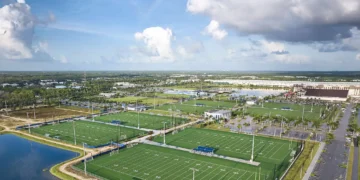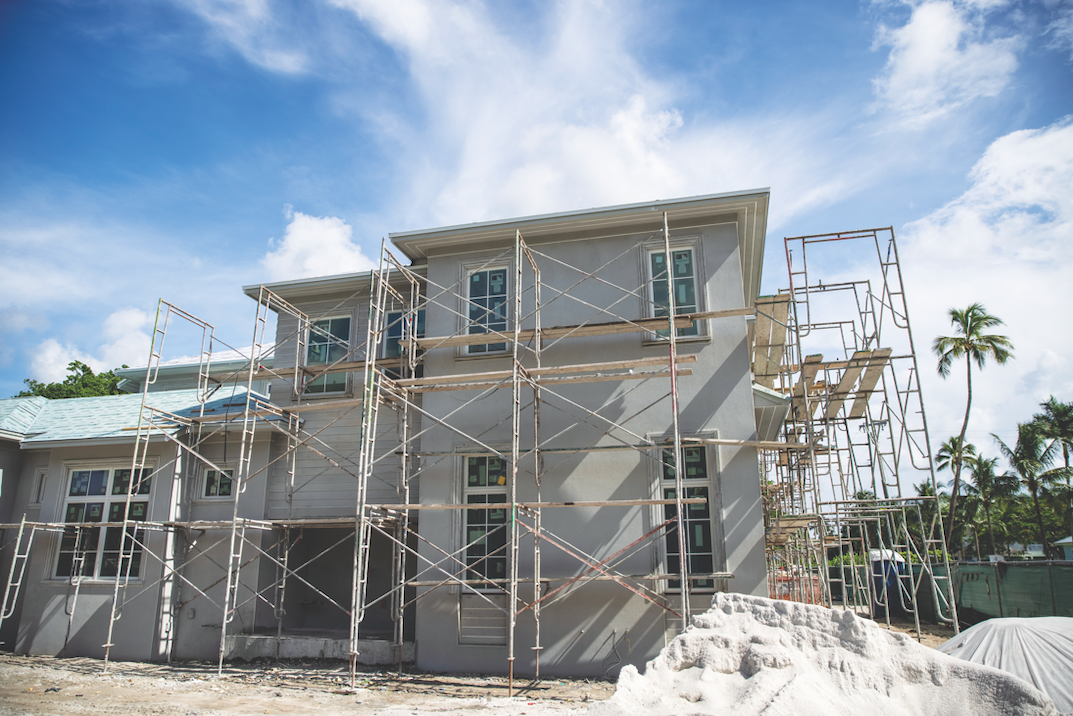
UNCERTAIN TIMES: Inflation affecting many sectors of the economy has forced builders to adapt at a time when they could be selling more homes.
On a hot, summer Sunday, dozens of people swarm a new residential development in Alva just north of Lehigh Acres in Lee County. Some visitors roam the model homes that start at around $300,000, as some wait to talk briefly with the sales consultant. Others drive through the community to view vacant lots and home sites under construction.
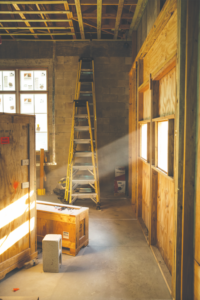 It was the day before Pulte Homes opened bidding on just two sites for new home construction at its Hampton Lakes at River Hall development, and a final chance for hopeful buyers to review options. Like many new construction developments throughout Southwest Florida, traffic was brisk and interest high at Hampton Lakes. And like most new home builders in Southwest Florida, Pulte had cut back new contracts for homes in the middle of an odd confluence in the region’s residential construction market.
It was the day before Pulte Homes opened bidding on just two sites for new home construction at its Hampton Lakes at River Hall development, and a final chance for hopeful buyers to review options. Like many new construction developments throughout Southwest Florida, traffic was brisk and interest high at Hampton Lakes. And like most new home builders in Southwest Florida, Pulte had cut back new contracts for homes in the middle of an odd confluence in the region’s residential construction market.
Demand for homes continues to soar in the wake of the region’s emergence from the pandemic, while supply of materials and workers to build new houses has collapsed. The result has forced many builders to limit new home contracts to two to five a month after increasing prices this year, in some cases more than 20%. Instead of leaning into the huge buyer demand by selling as many new homes as possible, builders are rationing new homes to buyers on waiting lists, or in the case of Pulte and other builders, to those willing to bid the highest.
This is the 2021 residential real estate market in Southwest Florida, where inventory of existing homes for sale dwindled to a fraction of normal stock. Instead of helping to close the inventory gap, the sale of new construction homes slowed to a trickle because of historic price increases in products like lumber and steel, and months-long delivery delays in materials like trusses and windows.
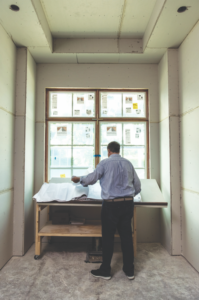 “Builders don’t know what the cost to build a home will be in six months,” says Randy Thibault, head of LSI Companies in Fort Myers, a land and commercial real estate company.
“Builders don’t know what the cost to build a home will be in six months,” says Randy Thibault, head of LSI Companies in Fort Myers, a land and commercial real estate company.
This isn’t a repeat of the 2006 rush of home buyers that led to a housing bubble collapse. In those heady days, there was no shortage of materials to dampen the building craze. Prices peaked as buyers bought, and home builders kept steady pace. But this time, builders are pulling back because of the surge in cost and scarcity in supply of construction materials.
“Now, more than ever, there’s just this demand in my opinion that we’ve never seen,” says Matt Sellick, president of Stock Custom Homes, a Naples builder.
Home builders are navigating this market carefully, opting to increase home prices, reduce the number of new homes sold and extend the construction delivery schedule out to as much as two years. In some cases, builders also are locking buyers into sales contracts that pass on the increased cost of materials after the deal is signed. This new escalation clause in many home-building contracts allows builders to charge buyers for higher construction costs if they continue to increase after the sale agreement is signed. So, for example, a buyer might see a higher sale price at closing than they hoped for a year or more earlier—potentially affecting financing and the amount of closing cash needed.
“That is something that no one wants to do,” says Ryan Benson, head of A. Vernon Allen Builder of Naples, a luxury home builder known for its Port Royal estates. Benson, who serves on the Florida Home Builders Association board, doesn’t use the escalation clause. But he said he has seen other builders in the region forced to adopt it.
“There reaches a point where you can’t lose money building a house,” he says.
This uncertainty caused by inflation affecting many sectors of the U.S. economy has forced builders to adapt at a time when they could be selling more homes to a rush of hungry buyers eager to live, not just invest, in Southwest Florida.
“They could be surfing a much higher wave, but they also are constrained because of this uncertainty,” says Amir B. Ferreira Neto, interim director of the Regional Economic Research Institute at Florida Gulf Coast University.
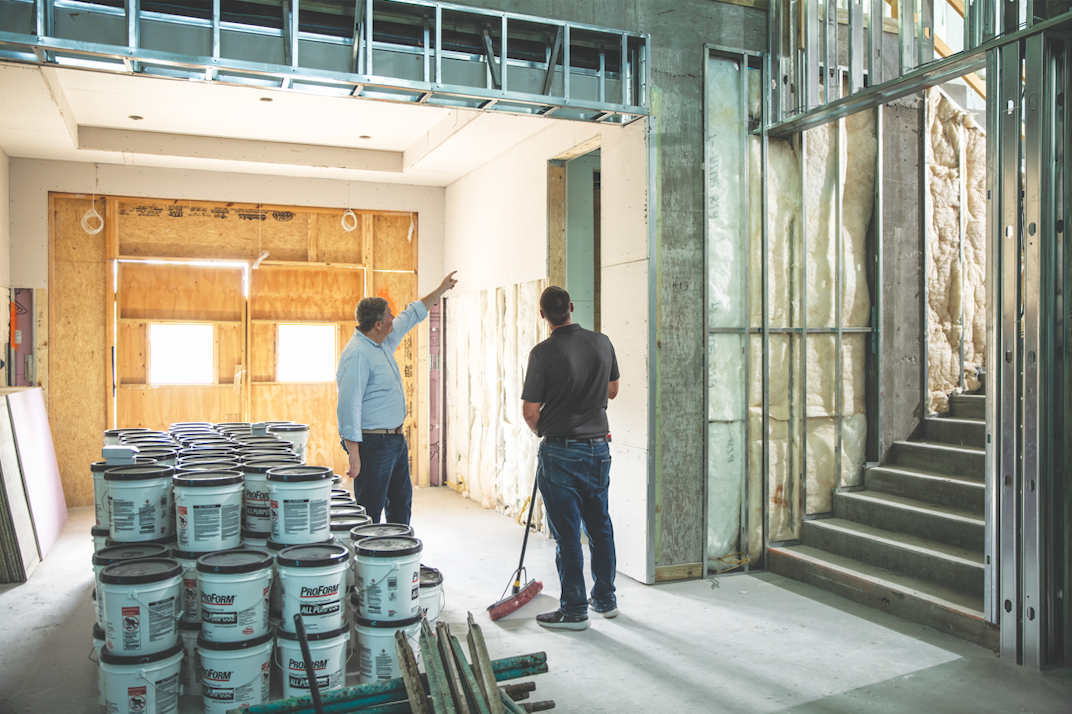
SUPPLY AND DEMAND: The need for new homes continues to soar during the pan- demic, while the availability of materials and workers to build houses has collapsed.
Simple supply and demand
When Pulte Homes opened the bidding for two of its home sites at one event this summer, it asked buyers to pick one of its homes to build on the lot and to estimate how much they would spend on options and upgrades. The bid form also asked buyers “how much over the home site premium would you like to offer to purchase this home.” The builder started the bidding on its smaller home layout, the Mystique, at $299,990, which was $25,000, or 9%, higher than the $273,990 advertised on its website.
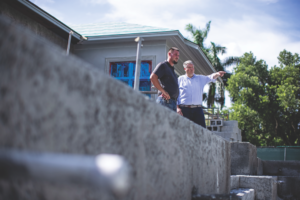 Multiple bids from buyers on existing homes have become more typical in Southwest Florida’s real estate market, and builders are starting to take advantage of it in new construction.
Multiple bids from buyers on existing homes have become more typical in Southwest Florida’s real estate market, and builders are starting to take advantage of it in new construction.
“That just brings back so much PTSD from 2005,” says Corey McCloskey, a Naples real estate agent who serves as vice president for operations at John R. Wood Properties. As soon as she made the reference to the time when Southwest Florida builders were selling new homes through lotteries before the housing bubble burst, McCloskey said that wasn’t a true comparison. After all, now isn’t then, and this market is very different.
But, while not the same, the buyer demand is similar. The most recent data shows it. Residential building permits in Collier, Lee and Charlotte counties increased 16% in 2020, up nearly 3,000 from 2019. “Epic, but not a boom yet,” Thibault said during a spring Market Trends event with other real estate experts outlining the region’s housing market. The 2020 numbers fell way short of the boom of 44,000 permits reported in 2005, and Thibault predicts 2021 will remain steady.

Corey McCloskey, John R. Wood Properties
But going into this summer, new construction residential building permits in Collier and Lee counties soared past 2020 levels for the first six months, up by more than 1,000 permits in each county. The Southwest Florida trend counters a national drop in new construction residential permits for the first half of the year.
The 2020 Census data shows the region grew by more than 1.3 million residents since 2010, growth mirrored by migration trends last year. Thibault noted that Collier, Lee and Charlotte counties issued nearly 23,000 more driver’s licenses in 2020 than in 2019. And U-Haul ranked a North Port dealer as the nation’s busiest location for moving vans in 2020, thanks to a surge in movers to the area.
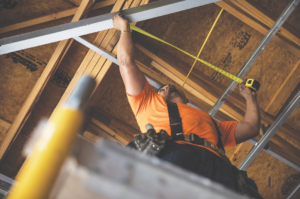 The Southwest Florida migration isn’t just from traditional feeder states in the Midwest. More residents are coming from New York, California and Pennsylvania in large numbers, with that increased interest reflected in United Airlines’ announcement this summer of new non-stop service to California from Southwest Florida International Airport. “There has been an uptick from other states that is more than in the past,” says Neto, the FGCU researcher.
The Southwest Florida migration isn’t just from traditional feeder states in the Midwest. More residents are coming from New York, California and Pennsylvania in large numbers, with that increased interest reflected in United Airlines’ announcement this summer of new non-stop service to California from Southwest Florida International Airport. “There has been an uptick from other states that is more than in the past,” says Neto, the FGCU researcher.
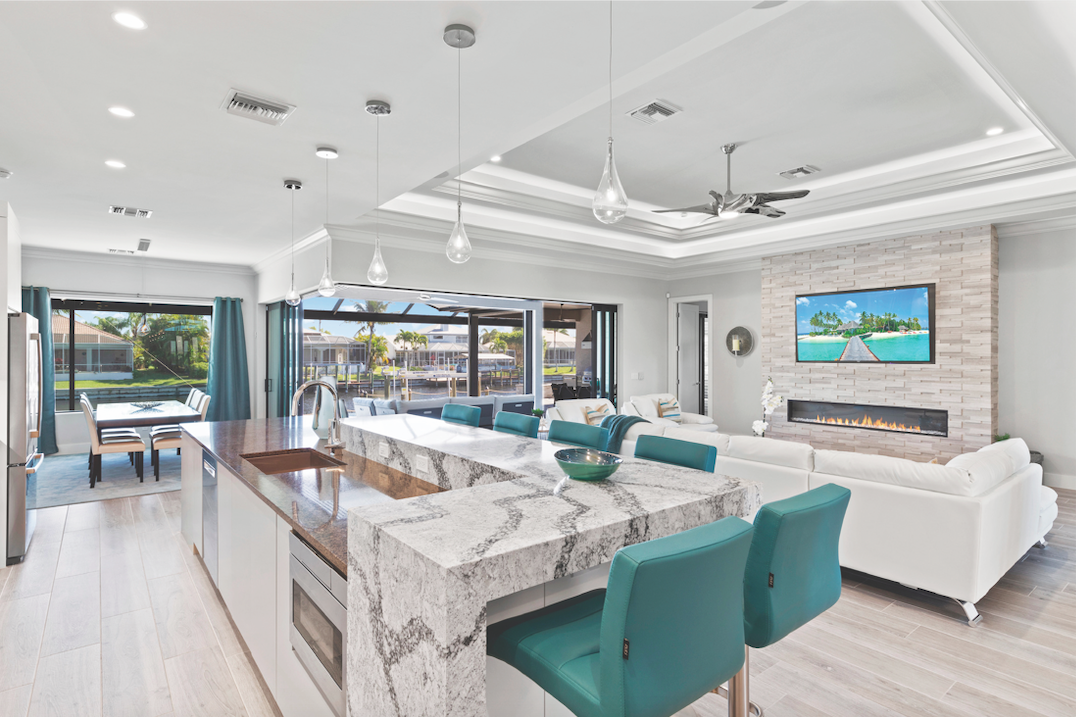
INVENTORY GAP: Existing homes for sale in Southwest Florida dwindled to a fraction of normal stock in the residential real estate market.
Battling backlog and inflation
It’s not just home builders and buyers dealing with inflation. The nation’s annual rate of inflation spiked this summer, breaking 5% for the 12 months prior after staying below 1.5% for most of 2020 and into 2021, according to the U.S. Department of Labor.

Paul Beattie, Beattie Development
The trend is widely regarded as a temporary jolt to the nation’s economy caused by ramped-up consumer spending after COVID and a flood of cash from federal stimulus spending. As production and manufacturing return to more normal levels and supplies improve, the big surge in prices for materials is expected to subside. It’s already happening with lumber futures, which peaked at more than $1,600 per thousand board feet in May and dropped to less than a third of that this summer. But that price near $480 per thousand board feet is still more than average of less than $400 per thousand board feet seen between 2009 and 2019.
Construction material delivery also plagued the building industry in the first half of 2021. Some materials such as roof trusses and appliances saw months-long delivery delays, while lead time for windows and other products doubled. Suppliers cut off or rationed materials to some smaller builders to serve larger ones, and some builders bought exclusive production slots from manufacturers that left others with more delays, said Benson, the luxury home builder in Naples. “It’s like a version of the toilet paper shortage we saw last year,” Benson says.
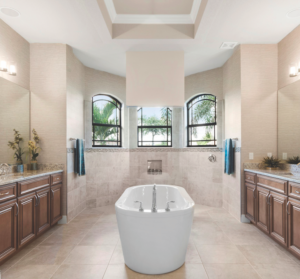 Area builders are slowing down sales of new construction as they work through a backlog of contracted homes that has been growing since the COVID-19 outbreak. Beattie said this summer he could keep crews busy for two years reducing his company’s backlog of new home orders without selling another home. The backlog means many builders can afford to reduce sales in hopes that the supply chain problems resolve and material costs decrease.
Area builders are slowing down sales of new construction as they work through a backlog of contracted homes that has been growing since the COVID-19 outbreak. Beattie said this summer he could keep crews busy for two years reducing his company’s backlog of new home orders without selling another home. The backlog means many builders can afford to reduce sales in hopes that the supply chain problems resolve and material costs decrease.
“Limiting the amount of contracts doesn’t hurt them as much,” says Neto. “They can expand quickly when they want to open up contracts. They’re trying to reduce losses from those backlogs and trying to ensure they don’t add to the backlog.”
But it’s still a tough choice being made by many builders who would prefer to be selling more houses, said Ford with the Lee County builders group. “If they could, they would turn and burn right now, but they can’t.”
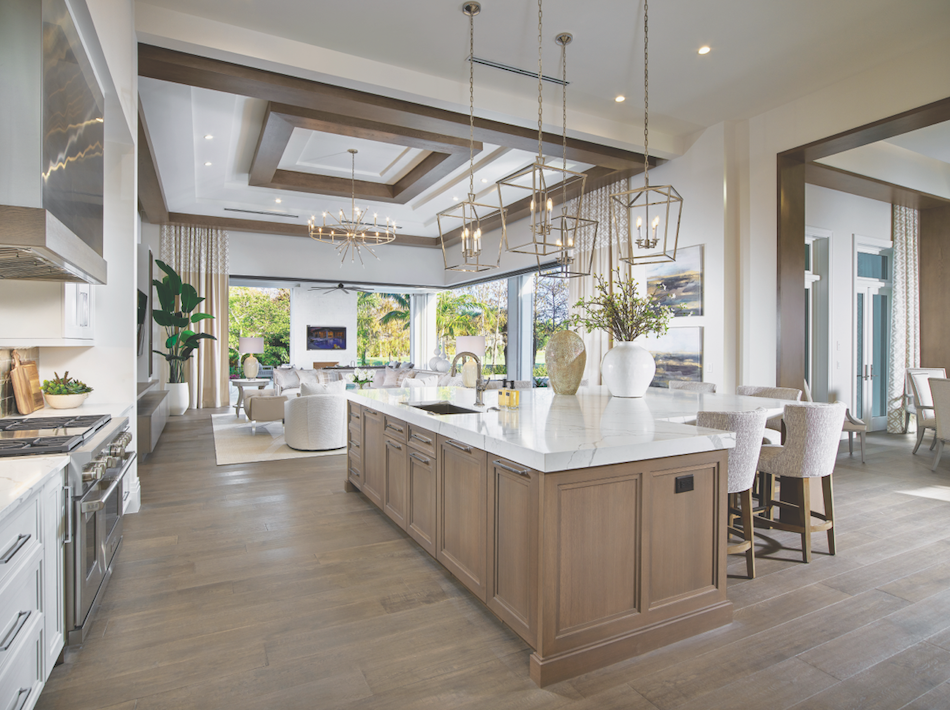
MARKET METRICS: Because of a huge demand, builders are rationing new homes to buyers on waiting lists or to those willing to bid the highest.
Waiting for the new normal
The cost of building materials is expected to continue decreasing this year, with some estimates suggesting that inflation will retreat and the area real estate market could stabilize later this year.
“I don’t want to give you a timeline,” says Neto. “But I do think the inflation is more transitory than permanent.”
Some other predictions are less optimistic. “It’s a struggle. I don’t know how long it will last. Maybe into 2023,” says Sellick.

Matt Sellick, Stock Development
Even in a more stable market with greater housing inventory for buyers, many builders and real estate experts don’t expect prices for new home construction to drop much. That’s thanks to another big difference between the 2021 buying surge and the period before the 2008 crash: Buyers are moving here, not just investing. “There are more cars in houses this time, not the speculators who were buying in the early 2000s,” Beattie says. “We won’t see a huge reduction in prices. The goal is to stop the increases.”
Southwest Florida is undergoing a significant shift in the real estate market that likely will have a lasting impact. It’s a mistake to think a housing crash is coming to the region that will bring home prices back to pre-COVID levels. “There’s not going to be a crash,” Beattie says. “I think some of this shows Naples was undervalued for a long time,” Sellick says. “This is just a desirable place.”

DELIVERY DELAYS: Suppliers cut off rationed materials to smaller builders, said Ryan Benson, a luxury home builder on the Florida Home Builders Association board.
Eye toward the future
Despite the higher prices, builders and others in the real estate industry insist now is still a good time to buy in a region that isn’t expected to see a dip in demand anytime soon. But they are watching how other events may affect the new construction market. Commercial building didn’t experience the surge that residential construction saw after the 2020 shutdowns, so that has limited the competition in the construction market. But Benson said another massive increase in federal spending, such as a proposed infrastructure program that Congress is considering, could put additional pressures on material supplies and the construction workforce. “The private sector can’t effectively compete against that,” Benson says.
Other factors could also affect the market, such as the end of the federal unemployment bonus and loan forbearance that gave consumers more disposable cash to spend. Some states such as Florida discontinued the $300 weekly federal unemployment bonus early, hoping to prod more people into construction jobs and other areas of the workforce. But as COVID vaccines become more widespread in the population, travel and tourism is expected to continue its post-pandemic resurgence. That could bring more potential buyers to the region, including many international visitors.
For now, Southwest Florida home builders and buyers are taking it one step at a time as they make their way through this unprecedented real estate market.
“At some point, there is a top out,” says Ford. “There’s only so much you can sell a house for.”
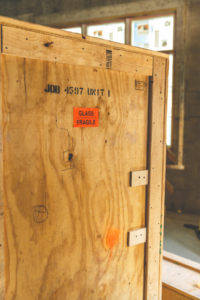
MATERIAL WORLD: Lumber prices spiked after building demand increased, nearly tripling for some raw products such as plywood.
NO SLOW IN DEMAND
The migration into the area is increasing buyer demand for housing. When McCloskey scanned active real estate listings one summer day, there were 979 listings for home sales in Collier County, compared to about 3,000 listed at the same time last year. The shortage of listings defined the first half of 2021, and the result has been an increase of nearly 30% in average home prices over 2020 in some areas.
Those higher prices also have shown up in the new construction market, even in areas with historically low housing prices. Since January, the list price for dozens of new construction homes with three bedrooms and two baths on scattered lots across Lehigh Acres has increased more than 20% to about $340,000, according to property listings. The same increase has occurred in Babcock Ranch, with entry-level prices increasing from $223,990 to $273,990 in the 18,000-acre development spanning Charlotte and Lee counties that led the region last year with 533 building permits.
“The price increases haven’t slowed anybody down yet,” says Paul Beattie, who heads the Lee County-based Beattie Development.
Sales agents at some new Collier and Lee communities are scribbling new prices on printed materials because the prices are changing so frequently. Beattie said his company has had to increase prices in the first half of 2021 by at least $10,000 each month since January for the custom homes they’re offering to build in Cape Coral and other areas. “This market has never been seen before,” Beattie says.
Lumber prices spiked after building demand increased in 2020, nearly tripling for some raw products such as plywood before prices started to fall this summer. The National Home Builders Association estimated that higher lumber prices added another $36,000 to a new single-family home. Nearly every building component of new homes, from concrete to countertops to copper, experienced big price increases.
“This is all out of our control,” says Sellick of Stock Development, who also serves as president of the Collier Building Industry Association. “There’s nothing I can do right now.”
Production of materials continues to ramp up after 2020 shutdowns during the pandemic, and after late winter storms earlier this year closed some manufacturers. Lack of workers has consistently plagued Southwest Florida builders in desperate need of skilled craftsmen, but the real problem in 2021 is the result of a broken supply chain that hindered much of the nation in COVID’s wake.
“It’s the supply chain issue that really is the main driver now,” says Phillip Ford, head of the Lee County Builders Association.
